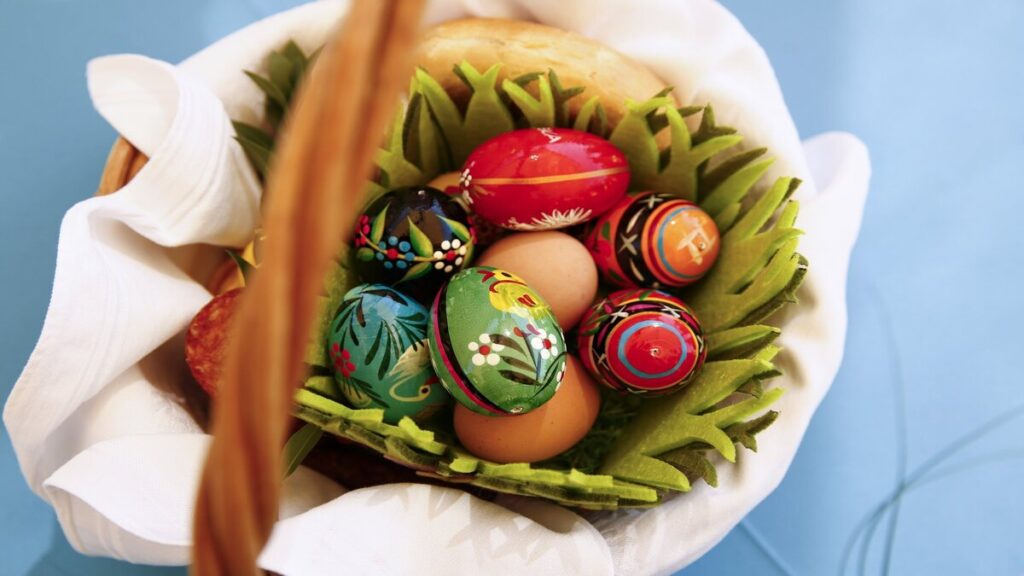Christians adopted this symbol to represent the resurrection of Jesus Christ: from the “dead” egg comes new life, and from the tomb comes the resurrected life of Jesus

Long before Christianity, the egg was a symbol of life, fertility, and renewal. In many ancient cultures (such as the Egyptians, Persians, and Romans), the arrival of spring was celebrated with rituals involving eggs, which symbolized the rebirth of nature after winter.
Christians adopted this symbol to represent the resurrection of Jesus Christ: from the “dead” egg comes new life, and from the tomb comes the resurrected life of Jesus.
During Lent, especially in the Middle Ages, Christians did not eat meat, milk, or eggs. Easter Sunday marked the end of this fast. Eggs that had been saved during Lent were boiled to preserve them and then eaten as part of the celebration.
In this way, they became a symbol of the resurrection of Jesus, representing new life born from something seemingly inert.
They represent new life and the resurrection of Christ. They are a symbol of joy and celebration after Lent.
Their decoration and delivery are part of a cultural and religious tradition that celebrates Easter. Chocolate eggs are a more modern custom (18th-19th centuries), popularized in France and Germany and then widely adopted.
Although chocolate itself has no religious value, chocolate eggs preserve the symbolism of life and the celebration of the resurrection in a festive and accessible way, especially for children.
Easter eggs in Latin America and Spain
In Mexico, Holy Week and Easter are very important religious days and are honored with processions, re-enactments of the Passion of Christ, and much participation in churches. The focus is more spiritual and liturgical than playful, so Easter eggs are not a popular or typical Mexican tradition. There is one fun local tradition: cascarones, which are empty eggshells filled with confetti, are broken on someone’s head as a symbol of joy.
In Spain, Holy Week is one of the most intense and traditional religious celebrations of the year. Spectacular processions are organized in many cities, such as Seville, Malaga, and Valladolid. As in Mexico, the focus is on the liturgical and cultural-religious rather than the recreational or commercial. And while Easter eggs are not a real Spanish tradition there, in Catalonia, for example, it is typical for godparents to give their godchildren the “Mona de Pascua.” This is a cake (sometimes with hard-boiled eggs or chocolate) that symbolizes the resurrection and the joy of Easter.
In Argentina, the celebration is very religious, but chocolate eggs and Easter doughnuts, a sweet bread decorated with cream and cherries, and along with a plastic or ceramic figure of the baby Jesus are given as gifts.
In Colombia, Holy Week is very solemn. Some cities, such as Popayán, have beautiful processions that have been declared part of the cultural heritage. In other areas, the Easter Bunny and chocolate eggs have also been introduced for the little ones.
In the United States, Easter eggs have their greatest popularity and visual expression. The famous “Easter egg hunts” are organized: children search for plastic eggs filled with candy hidden in gardens or parks. It is also common to give or exchange chocolate eggs, bunnies, and baskets filled with candy.
“The Saints,” presented by Fox Nation, is a Lenten Sponsor of The Good Newsroom. You can learn more about “The Saints” here: The Saints


